
- 420 pages
- English
- ePUB (mobile friendly)
- Available on iOS & Android
eBook - ePub
About this book
When Generals in Gray was published in 1959, scholars and critics immediately hailed it as one of the few indispensable books on the American Civil War. Historian Stanley Horn, for example, wrote, "It is difficult for a reviewer to restrain his enthusiasm in recommending a monumental book of this high quality and value." Here at last is the paperback edition of Ezra J. Warner's magnum opus with its concise, detailed biographical sketches and -- in an amazing feat of research -- photographs of all 425 Confederate generals. The only exhaustive guide to the South's command, Generals in Gray belongs on the shelf of anyone interested in the Civil War.
Frequently asked questions
Yes, you can cancel anytime from the Subscription tab in your account settings on the Perlego website. Your subscription will stay active until the end of your current billing period. Learn how to cancel your subscription.
At the moment all of our mobile-responsive ePub books are available to download via the app. Most of our PDFs are also available to download and we're working on making the final remaining ones downloadable now. Learn more here.
Perlego offers two plans: Essential and Complete
- Essential is ideal for learners and professionals who enjoy exploring a wide range of subjects. Access the Essential Library with 800,000+ trusted titles and best-sellers across business, personal growth, and the humanities. Includes unlimited reading time and Standard Read Aloud voice.
- Complete: Perfect for advanced learners and researchers needing full, unrestricted access. Unlock 1.4M+ books across hundreds of subjects, including academic and specialized titles. The Complete Plan also includes advanced features like Premium Read Aloud and Research Assistant.
We are an online textbook subscription service, where you can get access to an entire online library for less than the price of a single book per month. With over 1 million books across 1000+ topics, we’ve got you covered! Learn more here.
Look out for the read-aloud symbol on your next book to see if you can listen to it. The read-aloud tool reads text aloud for you, highlighting the text as it is being read. You can pause it, speed it up and slow it down. Learn more here.
Yes! You can use the Perlego app on both iOS or Android devices to read anytime, anywhere — even offline. Perfect for commutes or when you’re on the go.
Please note we cannot support devices running on iOS 13 and Android 7 or earlier. Learn more about using the app.
Please note we cannot support devices running on iOS 13 and Android 7 or earlier. Learn more about using the app.
Yes, you can access Generals in Gray by Ezra J. Warner in PDF and/or ePUB format, as well as other popular books in History & American Civil War History. We have over one million books available in our catalogue for you to explore.
Information
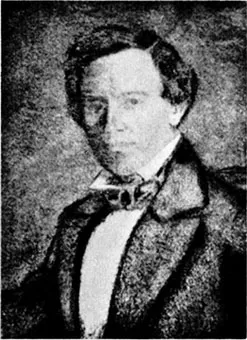
Daniel Weisiger Adams was born in Frankfort, Kentucky, probably in May or June of 1821. After reading law, he was admitted to the Mississippi bar and subsequently practiced in Louisiana. Meantime he had killed in a duel an editor who had criticized in the columns of his paper Adams’ father, a Federal judge. In 1861 he was appointed by Governor Moore of Louisiana one of three members of a board to place the state on a war footing. His first army service was as lieutenant colonel of the 1st Louisiana Regulars, of which he was later promoted colonel. Present at Pensacola, his regiment greatly distinguished itself at the battle of Shiloh, where Adams lost his right eye. He was promoted brigadier general on May 23, 1862, and commanded the Louisiana Brigade at Perryville, Murfreesboro (where he was again wounded), and at Chickamauga, where he was a third time wounded and captured. After his recovery and exchange, he was given command of a cavalry brigade in North Alabama. For a time in command of the District of Central Alabama, he was in the last months of the war in charge of the entire state north of the Department of the Gulf, and opposed the Federal General Wilson during the latter’s advance, which virtually terminated the war east of the Mississippi. General Adams was paroled at Meridian, Mississippi, on May 9, 1865, and went to England for a time. Upon his return to the United States he resumed the practice of law in New Orleans, where he died on June 13, 1872. He is buried near his brother, General William Wirt Adams, in Jackson, Mississippi, in an unmarked grave. (25)

John Adams, the son of Irish parents who emigrated to the United States in 1814, was born on July 1, 1825, in Nashville, Tennessee. Entering West Point in 1841, he was graduated five years later and was commissioned in the 1st Dragoons, with which he served during the Mexican War, receiving a brevet for gallantry at the battle of Santa Cruz de Rosales. Thereafter, and until the outbreak of the Civil War, he did frontier duty in Minnesota, California, and the Southwest; and from 1856 to 1858 was on recruiting service. He resigned his captain’s commission on May 31, 1861, and was at once appointed a captain of cavalry in the Regular Confederate Army and placed in command at Memphis. Attaining the grade of colonel in May 1862, he was commissioned brigadier general to rank from December 29 of that year and given General Lloyd Tilghman’s old brigade of Mississippi regiments. He led this brigade under General Joseph E. Johnston during the Vicksburg campaign, and under Lieutenant General Leonidas Polk in Mississippi. With the latter he joined the Army of Tennessee at Resaca, Georgia, and fought with distinction throughout the Atlanta campaign. Afterwards he accompanied General Hood to Tennessee. On November 30, 1864, in the holocaust at Franklin, Adams was severely wounded in the right arm. Refusing to leave the field, he led his men to the Union breastworks over which he attempted to jump his horse. Here he fell riddled with bullets, in the forefront of the Confederate assault. He is buried at Pulaski, Tennessee.
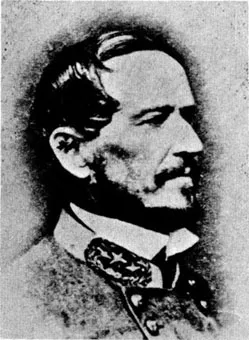
William Wirt Adams was born in Frankfort, Kentucky, on March 22, 1819, a brother of General Daniel Weisiger Adams. Educated at Bardstown, Kentucky, (26) he saw service in the army of the Republic of Texas in 1839, and then engaged in planting and banking in Mississippi, where he was a member of the legislature in 1858 and 1860. Upon the formation of the Confederate government Adams declined the postmaster-generalship tendered him by President Davis. Instead, he raised the 1st Mississippi Cavalry regiment of which he was made colonel. During the early part of the war his command operated more or less independently in Mississippi and Tennessee. For services in the Vicksburg campaign Adams was promoted brigadier general to rank from September 25, 1863. Toward the end of 1864 his brigade was attached to Forrest’s corps, with which it served until the end. After the war General Adams resided at Vicksburg and subsequently at Jackson. He was state revenue agent in 1880 and postmaster of Jackson in 1885. On May 1, 1888 he was killed in a street encounter with John Martin, a Jackson newspaper editor with whom he had quarreled. General Adams is buried in Jackson.
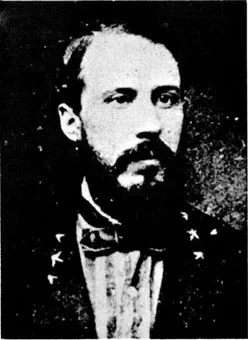
Edward Porter Alexander, one of three officers who attained the rank of brigadier general of artillery in the Confederate service, (27) was born in Washington, Georgia, on May 26, 1835. He was graduated from West Point in the class of 1857. Resigning from the old army on May 1, 1861, he was at once appointed a Confederate captain of engineers. After serving as signal officer to General Beauregard at First Manassas, he became chief of ordnance of the Army of Northern Virginia, with rank of lieutenant colonel; then chief of artillery of Longstreet’s corps; and was appointed brigadier general to rank from February 26, 1864. He participated in all the earlier battles of the army. His seventy-five guns raked the Federal line on Cemetery Ridge in preparation for Pickett’s famous assault at Gettysburg. He accompanied Longstreet to Chickamauga and Knoxville, and was in the thick of the fighting at Spotsylvania, Cold Harbor, and Petersburg. Severely wounded at Petersburg, he rejoined his command in time to make the last march to Appomattox. After the war General Alexander had an equally distinguished career as professor of engineering, railroad president, rice planter, and author (see Bibliography #43). Meantime he occupied various governmental posts of honor and responsibility. He died in Savannah, Georgia, April 28, 1910, and is buried in the City Cemetery at Augusta, Georgia.
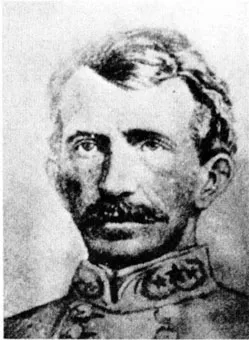
Henry Watkins Allen was born in Prince Edward County, Virginia, April 29, 1820. He was successively a resident of Missouri, where he received his education at Marion College; Mississippi, where he taught school and became a lawyer and planter; and Louisiana, where he was a member of the legislature for two terms. Meantime he studied law at Harvard, travelled in Europe, and saw service in the Texas War for Independence. He enlisted as a private in the Confederate Army and was immediately elected lieutenant colonel of the 4th Louisiana Infantry, and shortly colonel. He was first wounded at Shiloh in April 1862; and his leg was so shattered at Baton Rouge in August of that year as to compel him to walk on crutches for the remainder of his life. He was appointed brigadier general on August 19, 1863. General Allen’s most distinguished service was as governor of Louisiana during the last year of the war. Faced with enormous difficulties, his accomplishments in shoring up the economy of the Trans-Mississippi Department were unequalled. He was certainly one of the finest administrators produced by the Confederacy. After helping to negotiate the surrender of the forces under Kirby Smith, he went to Mexico City, where he established an English-language newspaper. His death occurred there on April 22, 1866. (28) He is buried in Baton Rouge, on the grounds of the old state capitol.

William Wirt Allen was born in New York City on September 11, 1835. He was raised in Montgomery, Alabama, and was graduated from Princeton in the class of 1854. Although he had read law, he took up the life of a planter and was thus engaged at the outbreak of war. Allen was mustered into the Confederate Army as 1st lieutenant in the Montgomery Mounted Rifles; he was soon elected major of the 1st Alabama Cavalry. After fighting at Shiloh, he was promoted colonel of his regiment and commanded it during the Kentucky invasion, being wounded at Perryville and again at Murfreesboro. He was appointed brigadier general to rank from February 26, 1864, and was given command of a brigade in Wheeler’s cavalry corps, which he led during the Atlanta campaign; later he was placed in charge of a division. On March 4, 1865 he was appointed major general with temporary rank, the last such promotion made by the President; however, the Senate failed to act upon the nomination, and he was paroled as a brigadier at Charlotte, North Carolina. (29) After the war General Allen returned to his plantation, and also engaged in the railroad business. For several years he was adjutant general of Alabama; he also served as a United States marshal during Grover Cleveland’s first administration. He died at Sheffield, Ala., November 24, 1894, and is buried in Birmingham.

George Burgwyn Anderson was born near Hillsboro, North Carolina, (30) on April 12, 1831. After attending the University of North Carolina, he entered the U. S. Military Academy from which he was graduated in 1852 as a brevet 2nd lieutenant, 2nd Dragoons. Anderson’s old army service was entirely on the frontier in the mounted arm. He had advanced to the rank of 1st lieutenant when he resigned his commission, April 25, 1861, to cast his lot with the Confederacy. Immediately commissioned colonel of the 4th North Carolina, he took his regiment to Manassas Junction shortly after the first battle at that place. Here he remained as post commandant until March 1862. Anderson was a furious fighter. His personal bravery at Williamsburg impelled President Davis to appoint him brigadier general to rank from June 9. His brigade was conspicuous during the Seven Days, and Anderson sustained a wound while leading a charge at Malvern Hill. Anderson was under the command of D. H. Hill at South Mountain, and went into his last fight three days later at Sharpsburg on September 17, where, holding a part of the line almost unsupported, he received a ball in his foot. First transported to Shepherds-town and then to Staunton, Virginia, he was subsequently taken to Raleigh, where his foot was amputated. He failed to rally from the operation, and died on October 16, 1862. He is buried in Raleigh, North Carolina.
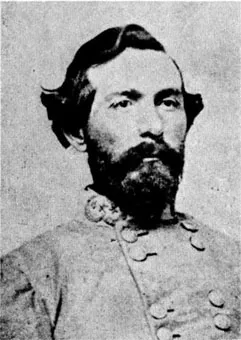
George Thomas “Tige” Anderson was born in Covington, Georgia, on February 3, 1824. (31) While a student at Emory College, Oxford, Georgia, he left to enter the Mexican War as a lieutenant of Georgia Cavalry in the command of General Stephen W. Kearny; and in 1855 was commissioned into the regular service, from which he resigned in 1858 as a captain of the 1st Cavalry. (32) Elected colonel of the 11th Georgia Infantry in 1861, Anderson acted as brigade commander during the battles of the Seven Days, at Second Manassas, and at Sharpsburg. He was appointed brigadier general November 1, 1862. Anderson was at Fredericksburg, and followed the fortunes of Long-street’s corps in the Suffolk expedition, at Gettysburg (where he was severely wounded), Chickamauga, Knoxville, and through the Virginia campaign of 1864. His brigade was attached to General Charles W. Field’s division at Appomattox, and he was there paroled. After the war General Anderson served for a time as freight agent for the Georgia Railroad at Atlanta and was later chief of police of that city. The last years of his life were spent as chief of police and county tax collector at Anniston, Alabama, where he died on April 4, 1901. He is buried in Edgemont Cemetery there.

James Patton Anderson, a native of Tennessee, was born in Franklin County on February 16, 1822. (33) Anderson’s antebellum career was one of varied pursuits. He first studied and practiced medicine in Hernando County, Mississippi, from which locality he raised and commanded the 1st Battalion Mississippi Rifles in the Mexican War with rank of lieutenant colonel. After a term in the Mississippi legislature, he was appointed by President Pierce United States marshal for Washington Territory, which he was presently elected to represent as Delegate to Congress. The outbreak of the war found him in Florida, a member of the state secession convention. Appointed colonel of the 1st Florida Infantry, his initial service was with General Bragg at Pensacola. Promoted brigadier general on February 10, 1862, he fought gallantly at Shiloh and commanded a division at Perryville. His brigade especially distinguished itself at Murfreesboro. Again in division command at Chickamauga and Chattanooga, he was promoted major general to rank from February 17, 1864. In command of the District of Florida during the first part of the Atlanta campaign, he was recalled to the Army of Tennessee in time to participate in the battles of Ezra Church and Jonesboro, where he was severely wounded. He rejoined the army in North Carolina and surrendered with it at Greensboro. After the war General Anderson conducted a farm paper in Memphis and was collector of state taxes for Shelby County. He died at Memphis on September 20, 1872, and is buried there.

Joseph Reid Anderson, “the Krupp of the Confederacy,” was born at “Walnut Hill,” Botetourt County, Virginia, February 16, 1813, and was graduated from West Point in the class of 1836. Resigning from the army the following year, he turned his talents to engineering, becoming in 1841 superintendent of the Tredegar Iron Works in Richmond, of which he subsequently gained control. Soon after the outbreak of war Anderson entered field service and was commissioned brigadier general, September 3, 1861. First in command at Wilmington, he was called to Virginia in the spring of 1862, and commanded a brigade on the Peninsula and in the battles of the Seven Days, where he was wounded. His services at the Tredegar Works being deemed of inestimably more value than in the field, he resigned his commission on July 19, 1862, and devoted his time thereafter to implementing the Confederate war effort. His company became the mainstay of the Ordnance Department, ceasing operations only upon the evacuation of Richmond. The works, first confiscated by the Federal government, were returned to their owners in 1867 and reorganized with Anderson as president. He operated them until his death on the Isles of Shoals, New Hampshire, September 7...
Table of contents
- Cover
- Title Page
- Copyright Page
- Preface
- Acknowledgments
- Contents
- Introduction
- Biographical Sketches
- Appendices
- Notes
- Bibliography